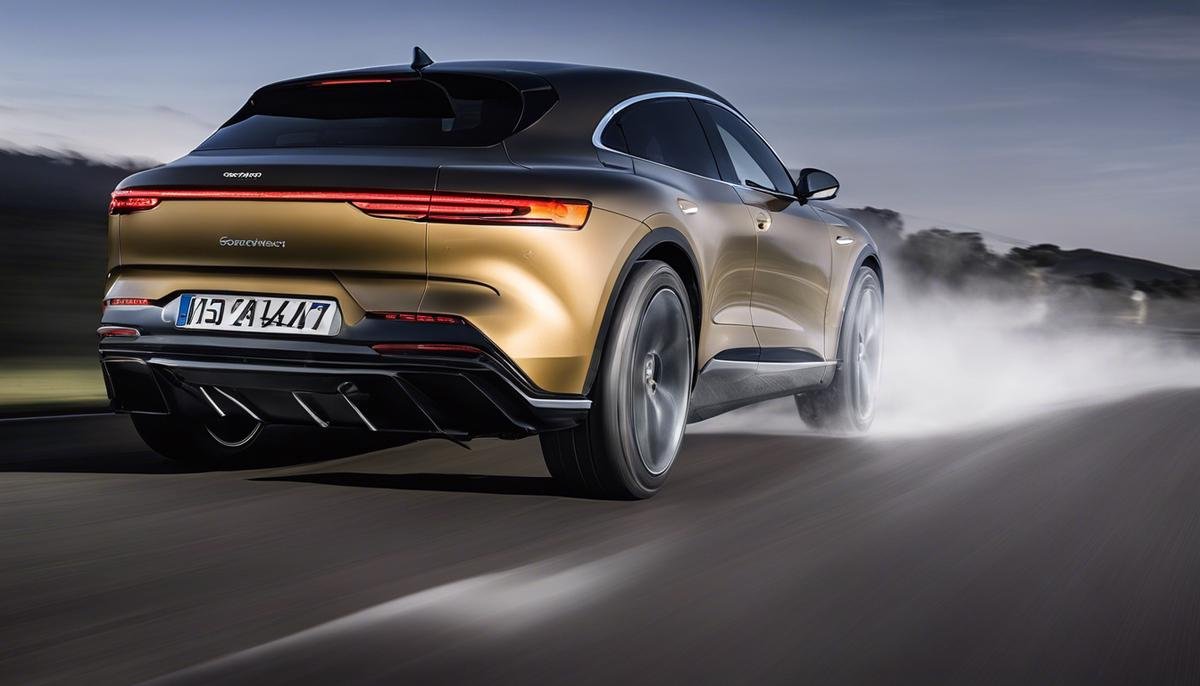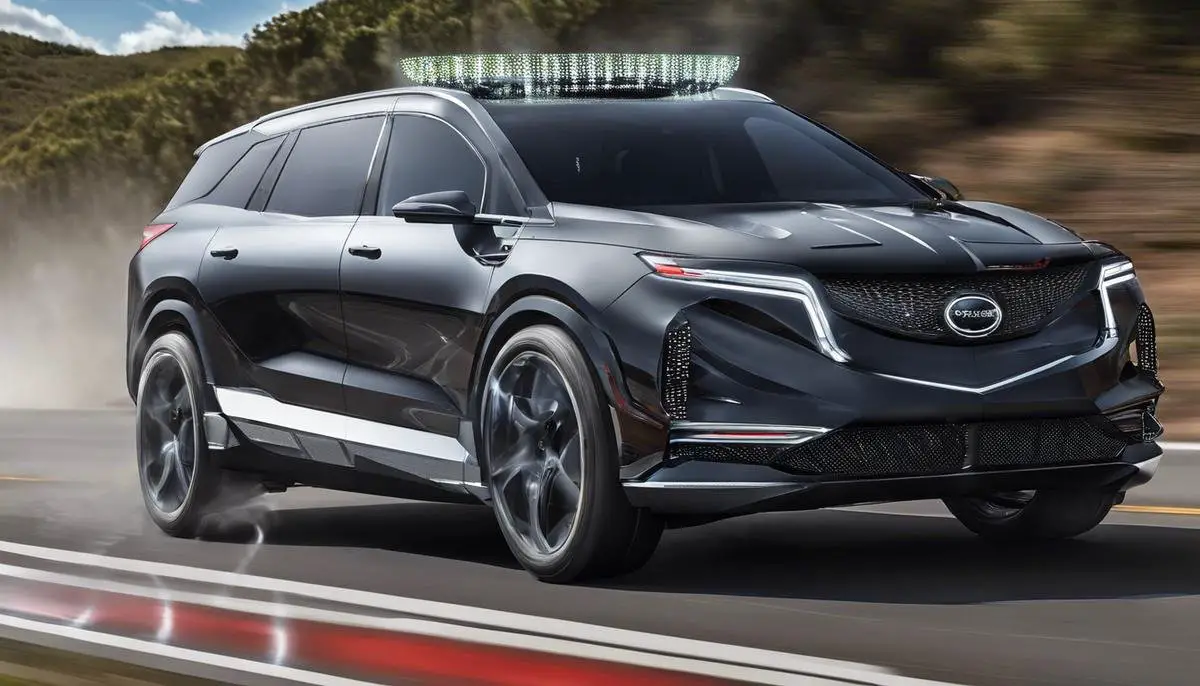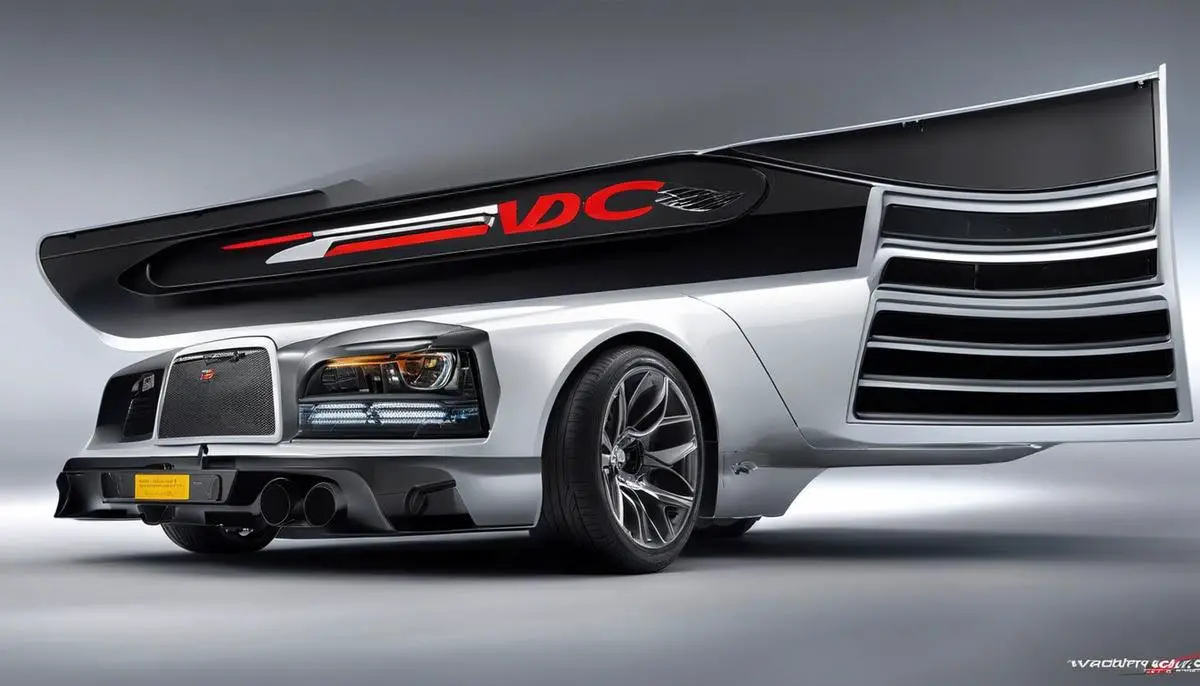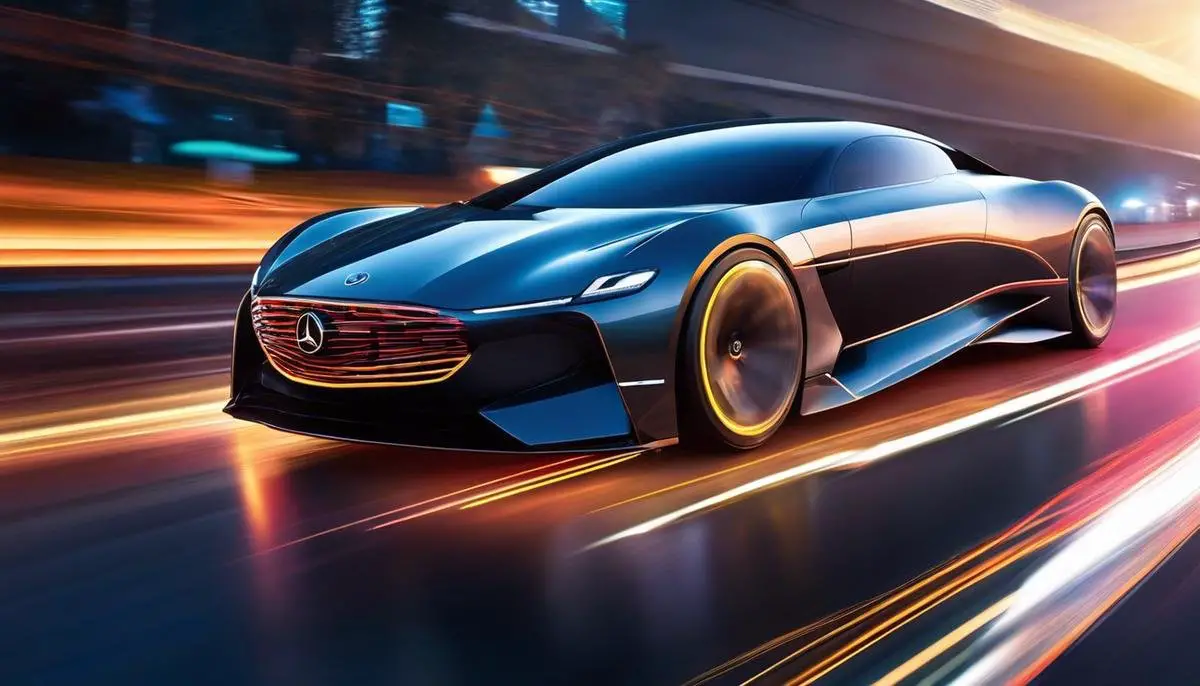
Vehicle Dynamics Control, or VDC, represents a leap forward in automotive safety and performance, seamlessly blending the capabilities of a vehicle with sophisticated electronic guardianship. As unseen but vigilant protectors, VDC systems maintain an iron grip on stability by managing traction and precise brake application, stepping in during critical moments to keep drivers on their intended path. This essay embarks on an exploration of the often-understated hero of modern motoring—digging deep into its mechanical heart and the algorithms that make VDC an indispensable component of the contemporary driving landscape. From the technological intricacies and their impact on vehicle stability to the ways in which they heighten the driving experience, we will traverse the landscape where innovation meets practical application, revealing how VDC technology has become a cornerstone of automotive design.
Understanding VDC in Automotive Technology
Unlocking Enhanced On-Road Safety: The Role of VDC in Vehicle Dynamics
In the lexicon of automotive technology, VDC stands for Vehicle Dynamics Control, a system that epitomizes the intersection of cutting-edge tech and safety. As enthusiasts who embrace innovation, the adoption of VDC is a testament to leveraging technology to ensure our journeys are not just efficient, but secure as well.
So what exactly is VDC? It's an advanced active safety feature, also commonly known as Electronic Stability Control (ESC). This intelligent tech monitors your vehicle's dynamics – think speed, steering angle, and lateral acceleration – to provide a buffer against loss of control, particularly during quick maneuvers or slippery conditions.
Perhaps the most impressive aspect of VDC is its proactive nature. The system doesn't just passively wait for a potential mishap. Instead, it uses a series of sensors that continuously feed data into a sophisticated computer algorithm. This algorithm predicts potential loss of traction and takes instant action to prevent it.
When VDC detects that the vehicle is straying from the intended path, it applies the brakes to individual wheels and, if necessary, adjusts engine power. This nuanced braking helps to prevent understeer or oversteer, keeping the vehicle on its intended trajectory. The driver remains in the loop but is supported by a guardian angel of sorts that steps in only when physics threaten to supersede human control.
Automation within VDC is a cardinal example of problem-solving through technology. Manual corrections to skidding or sliding can be hit-or-miss, with overcorrections potentially exacerbating the problem. VDC, however, provides calibrated interventions that maximize traction performance and vehicle stability.
To truly appreciate VDC's contribution to safety, consider the statistics: The National Highway Traffic Safety Administration (NHTSA) cites that one-third of all fatal accidents could potentially be prevented by the widespread use of ESC systems like VDC. It’s clear evidence that technology can and does save lives on the road.
Beyond safety, VDC also enhances the driving experience by enabling a smoother ride, reassuring drivers that their vehicle can handle unexpected conditions with grace and precision. Whether navigating rain-slicked highways, executing emergency maneuvers, or simply enjoying a spirited drive on a winding road, VDC provides a safer and more controlled driving environment.
In summary, Vehicle Dynamics Control stands as a standard-bearer for the potential of technology to elevate safety and driver confidence. It’s a critical component that no modern vehicle should be without, as it boldly exemplifies the power of automated systems in today’s increasingly sophisticated automobiles.

The Impact of VDC on Modern Driving Experience
Vehicle Dynamics Control (VDC) technology continues to redefine automotive excellence, transforming the driving experience beyond just safety enhancements. The incorporation of VDC into contemporary vehicles reflects the automotive industry's shift towards intelligent, responsive systems that cater to the demands of discerning drivers who expect more than just a form of transport—they anticipate an immersive driving encounter with their vehicles.
Diving into the technical orchestration behind VDC, it's evident that this system's integration into vehicle management is an exemplary milestone in automotive evolution. VDC doesn't exist in isolation. It synergizes with an array of sensors and electronic components to monitor and adapt to driving dynamics continuously. These technological sophistications solidify VDC’s position at the core of Advanced Driver Assistance Systems (ADAS), where it works seamlessly with traction control and Anti-lock Braking Systems (ABS) to ensure exemplary vehicular poise and authority on varying terrains and in diverse conditions.
However, VDC's influence extends beyond the reactive safety parameters; it enhances driving pleasure by delivering optimal performance tailored to driver inputs and exterior factors. The allure of VDC lies in its ability to refine torque distribution and braking imperceptibly, crafting a drive that feels both organic and engineered. Its subtle modulations cater to enthusiasts who crave a nuanced conversation with the road, ensuring that the vehicle's responses feel as natural as they are technically calculated.
Moreover, VDC systems now incorporate predictive functionalities, using data from navigation systems, cameras, and other sensor inputs to anticipate and prepare the vehicle’s dynamics for the road ahead. This predictive acumen paves the way for not just reactive safety, but also a smoother and more predictive driving experience—one that can anticipate and negate the need for abrupt interventions.
Adaptive drive modes further augment VDC's role in driver experience. With settings that range from economy to sport, VDC can subtly or substantially change a vehicle's dynamics to match the driver's preference or need, making it an indispensable tool for a truly customized driving experience. This feature illustrates technology's ability to bridge the gap between the utilitarian demands of transportation and the emotional articulation of driving as an experience.
In a sphere where the driving experience is progressively defined by the integration of technology, VDC systems emerge as the central nerve of vehicle control, imbuing modern vehicles with a sense of intelligence and adaptability. These systems showcase a future where vehicles not only transport but also intelligently interact with their drivers, providing a canvas on which the art of driving can be redefined.
The embrace of VDC technology is a testament to the automotive industry's progress and the relentless pursuit of innovation, adding layers to the driver-vehicle relationship that were unfathomable just a few decades ago. Through VDC, vehicles today are not merely machines—they are dynamic partners, co-conspirators in the quest for a perfect drive. With VDC, the future of the driving experience is already on the driveway, and it is exhilarating.
- Image Description:

VDC Comparisons and Market Trends
VDC Systems Across Manufacturers: A Competitive Overview
As Vehicle Dynamics Control (VDC) systems become a standard component in vehicles, understanding how they differ among manufacturers is essential for tech-savvy consumers aiming to make an informed purchase. The variations in proprietary technology, the integration method with other systems, and the overall vehicle architecture contribute to noticeable differences in the behavior and effectiveness of VDC.
Manufacturer-Specific Implementations
Each automaker calibrates its VDC system to complement the unique driving characteristics of their vehicle lineup. That means luxury sedans and performance vehicles may employ more sophisticated VDC algorithms compared to their economy or base model counterparts. For instance, high-end models may feature VDC systems with finer adjustments and more sensitive sensors, accommodating the nuances of high-speed dynamics.
Integration with Other Automotive Technologies
VDC doesn't work in isolation. The way it interacts with other vehicle systems like electric power steering, adaptive suspension, or torque vectoring differentiates the driving experience from one manufacturer to another. For example, some employ VDC to work in tandem with all-wheel drive systems to enhance traction, while others might integrate it more deeply with predictive safety features like collision avoidance systems.
Current Trends in VDC Development
The latest trend is the gradual shift towards systems that not only react to the driver's inputs but also actively enhance them. These systems are increasingly utilizing machine learning algorithms to predictively adjust vehicle dynamics based on driving habits, road conditions, and near-real-time data.
Another trend is the systemic integration into the holistic driver assistance package that forms the burgeoning skeleton of semi-autonomous vehicles. As these vehicles evolve, the line between VDC and other driver assistance technologies blurs, creating a more unified system that can make split-second decisions for optimum safety and performance.
Electric vehicles (EVs) are raising the bar for VDC systems, as the instant torque characteristic of electric motors requires recalibrated traction control and stability systems for maximized performance and safety.
Manufacturer-Specific Features Worth Noting
Tesla, for example, is recognized for its over-the-air (OTA) updates, which not only add new features but also refine existing systems like VDC, potentially improving vehicle dynamics without hardware changes. Meanwhile, BMW's Dynamic Stability Control (DSC) system includes additional functions like Brake Fade Compensation, which is not commonly found in base VDC configurations.
Adaptive VDC systems are also gaining prominence, with manufacturers like Audi offering drive select modes that allow the driver to tailor the responsiveness of the VDC depending on their driving style and the environmental conditions.
Market Leaders and Innovators
It's important to acknowledge the benchmark settings in the industry; for instance, Subaru's renowned Symmetrical All-Wheel Drive system is often praised for its VDC performance, particularly in low-grip scenarios. In contrast, Mercedes-Benz's Electronic Stability Program (ESP) showcases a high level of refinement, indicative of the brand's luxury lineage.
The Continuous March of Technological Progress
The diversity of VDC implementations is a testament to the relentless innovation within the automotive industry. Manufacturers strive to deliver systems that not only conform to safety standards but also cater to the distinct driving dynamics associated with their brands.
In the quest for safety and driving perfection, VDC systems have become the silent guardian of vehicle dynamics. They represent the fusion of safety and performance, ensuring a seamless and responsive driving experience tailored to the individual preferences and the varied capabilities of modern vehicles. Driving into the future, VDC systems will undoubtedly continue to evolve, anchoring themselves as indispensable to the next generation of automotive excellence.

The Future of VDC Technology
Advancements in Vehicle Dynamics Control: A Glimpse into the Road Ahead
The onward march of Vehicle Dynamics Control (VDC) technology is poised to accelerate, blending cutting-edge advancements with sophisticated software to deliver unprecedented levels of vehicular stability and safety. As VDC systems become more ingrained in the framework of modern vehicles, a surge of innovation awaits on the horizon. Here’s what to expect:
Machine Learning and Artificial Intelligence: The integration of AI and machine learning is setting the stage for VDC systems that learn from a myriad of driving situations. These systems will analyze vast amounts of data in real-time, enabling them to adjust control strategies for optimized performance uniquely tailored to individual driving styles and varying road conditions.
Vehicle-to-Everything (V2X) Communication: Enhanced connectivity through V2X promises a leap forward in VDC capabilities. By receiving information about traffic conditions, road hazards, and weather from external sources, VDC systems will be able to preemptively adjust vehicle dynamics even before the driver encounters these factors, leading to a safer and smoother driving experience.
Electrification and VDC: As electric vehicles (EVs) continue to rise in popularity, VDC systems are becoming more relevant. The inherent characteristics of EVs, such as lower center of gravity and instant torque response, provide a unique platform for VDC systems to exploit. Improved battery technologies will ensure that the added energy demands of advanced VDC systems do not compromise vehicle range.
Autonomous Vehicles and VDC Synergy: In the realm of autonomous vehicles, VDC systems will play a critical role. As vehicles transition to higher levels of autonomy, VDC will work in tandem with self-driving algorithms to ensure that, even without a human driver's input, a vehicle can maintain optimal stability and control.
Customization and Personalization: The next wave of VDC will offer a more personalized driving experience, allowing drivers to select and save preferred dynamic settings. This means not only altering suspension firmness or throttle response but also customizing the vehicle's stability and traction control profiles according to personal preference or specific driving scenarios.
Augmented Reality Dashboards: With the integration of augmented reality (AR) into vehicle dashboards, drivers will be able to visualize VDC interventions in real-time. This technology will not only enhance situational awareness but will also foster a better understanding of how VDC systems contribute to vehicle safety and performance.
In conclusion, the advancements anticipated in VDC technology reflect a clear trajectory towards smarter, safer, and more connected driving experiences. As these systems evolve, they will continue to redefine the relationship between driver, vehicle, and road – ensuring that, even as the landscape of mobility transforms, the thrills of driving are enhanced without compromising on safety.

The relentless march of technology continues to reinvent the wheels beneath us, driving us toward an era where our vehicles not only understand the road but anticipate its challenges. As VDC systems become more intertwined with the fabric of autonomous technology and machine learning, their role in defining the future of transportation becomes increasingly clear. With every turn and swerve they correct, these systems underscore their invaluable contribution to our journey, promising a safer, more controlled, and enjoyably precise driving narrative. And so, as we peer over the horizon, it is evident that the symbiosis of VDC and next-generation vehicle innovation will steer us toward a destination replete with unrivaled safety and exhilarating performance.
Image Source: https://writio.com/




